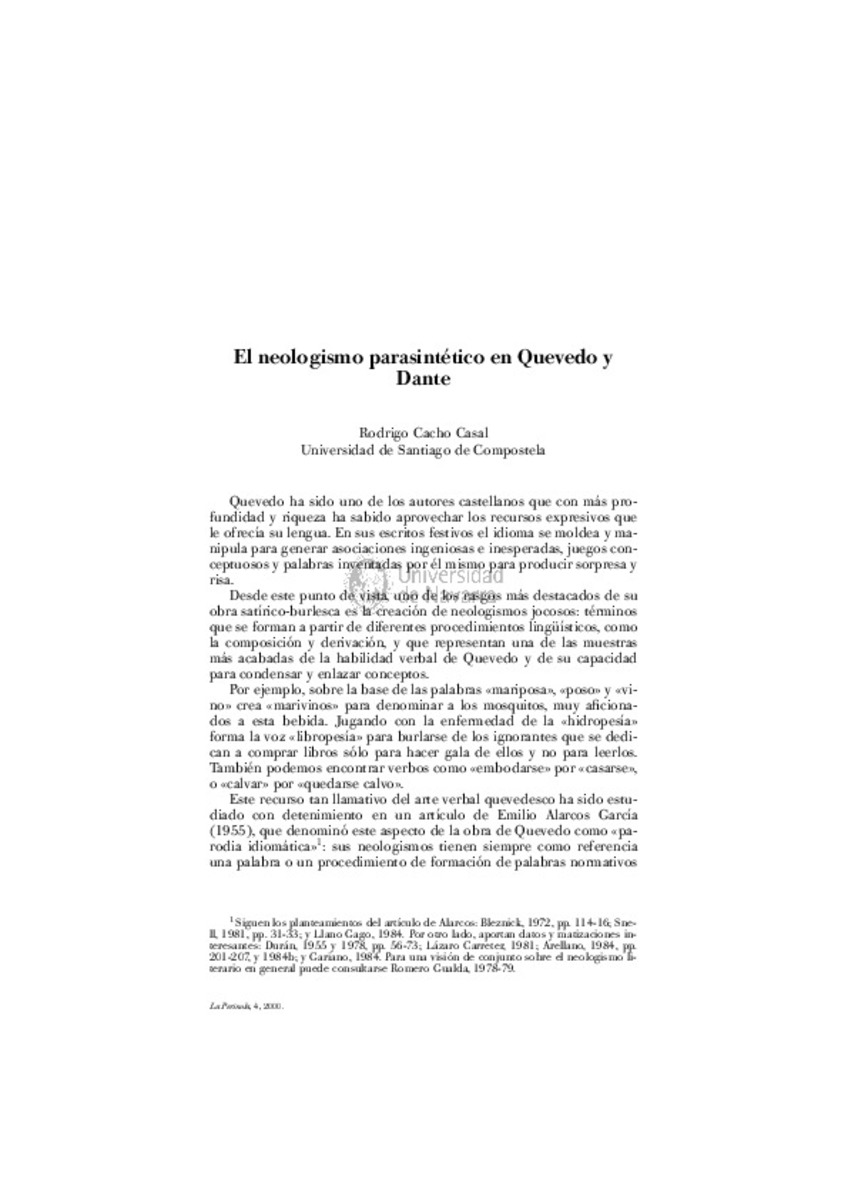Full metadata record
| DC Field | Value | Language |
|---|---|---|
| dc.creator | Cacho-Casal, R. (Rodrigo) | |
| dc.date.accessioned | 2009-06-22T12:40:33Z | - |
| dc.date.available | 2009-06-22T12:40:33Z | - |
| dc.date.issued | 2000 | - |
| dc.identifier.citation | La Perinola. Revista de Investigación Quevediana, 4, 2000, pp. 417-445 | es_ES |
| dc.identifier.issn | 1138-3636 | - |
| dc.identifier.uri | https://hdl.handle.net/10171/3912 | - |
| dc.description.abstract | El presente artículo se ocupa de las posibles fuentes de los neologismos parasintéticos burlescos de Quevedo. El estudio se ocupa de diferentes antecedentes del escritor español que parten de la literatura griega y latina y llegan hasta los autores castellanos de los siglos XV a XVII. Tras comprobar la originalidad de Quevedo en este tipo de creaciones lingüísticas, nos centramos en la relación entre el escritor español y Dante Alighieri que también hace un uso abundante de formaciones parasintéticas en su Divina Comedia. El conocimiento que Quevedo tenía de esta obra, y los parecidos encontrados entre ambos autores permiten hipotizar una influencia del florentino en los neologismos quevedianos. This article tries to analyse the sources of the Quevedo’s burlesque neologisms. The author studies different examples taken form Latin and Greek literature until Spanish authors from the XVIth and XVIIth centuries. After researching the originality of Quevedo, professor Cacho analyses the relation between Quevedo and Dante Alghieri. It is possible to formulate an influence from Dante on Quevedo. | es_ES |
| dc.language.iso | spa | es_ES |
| dc.publisher | GRISO-Universidad de Navarra | es_ES |
| dc.rights | info:eu-repo/semantics/openAccess | es_ES |
| dc.title | El neologismo parasintético en Quevedo y Dante | es_ES |
| dc.type | info:eu-repo/semantics/article | es_ES |
| dc.identifier.doi | 10.15581/017.4.28158 | es_ES |
Files in This Item:
Statistics and impact
Items in Dadun are protected by copyright, with all rights reserved, unless otherwise indicated.






